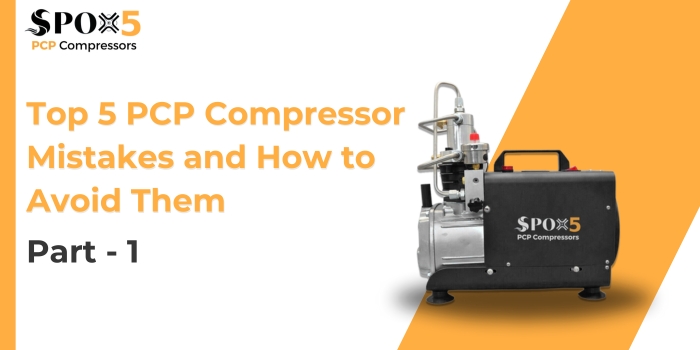PCP (progressing cavity) compressors are the workhorses of the compressed air world, powering everything from air rifles to industrial applications. But like any powerful tool, they require proper handling to ensure safety, efficiency, and longevity. Here, we explore the top 5 common mistakes with PCP compressors and provide solutions to keep your air source running smoothly.
Mistake #1: Ignoring the Manual
The Problem: Every PCP compressor model has its own specific capabilities and limitations outlined in the user manual. Ignoring these guidelines can lead to a world of trouble.
The Consequences: Skipping the manual can result in:
- Reduced Efficiency: Operating outside the recommended pressure range or using the wrong settings can strain the compressor and decrease its overall efficiency.
- Premature Wear and Tear: Pushing the compressor beyond its limits can accelerate wear on internal components, shortening its lifespan.
- Safety Hazards: Operating with improper procedures or exceeding pressure limits can increase the risk of accidents and injuries.
The Solution: Make the user manual your best friend. Familiarize yourself with:
- Recommended Pressure Range: Each model has a specific pressure range it’s designed to handle. Always operate within these limits.
- Compatible Fluids: The manual will specify the types of fluids the compressor can handle safely. Using incompatible fluids can damage internal components.
- Maintenance Schedule: The manufacturer recommends a specific maintenance schedule for oil changes, filter replacements, and inspections. Regular maintenance ensures optimal performance and longevity.
Mistake #2: Neglecting System Design
Das Problem: Wenn man sich nur auf den Kompressor selbst konzentriert und das gesamte Systemdesign vernachlässigt, kann dies zu Leistungsproblemen führen.
The Consequences: A poorly designed system can put undue stress on your PCP compressor and hinder its ability to perform efficiently:
- Improper Pipe Sizing: Undersized pipes create excessive back pressure, reducing the compressor’s effective PSI output and potentially leading to overheating.
- Unzureichende Filterung: Werden vor dem Kompressor keine geeigneten Filter verwendet, können Verunreinigungen in das System gelangen und die internen Komponenten beschädigen.
- Ignorieren des Systemgegendrucks: Wenn der Gegendruck von nachgeschalteten Anlagen ignoriert oder nicht beachtet wird, kann die Kapazität des Kompressors, die gewünschte Durchflussmenge zu liefern, reduziert werden.
Die Lösung: Bei der Planung eines PCP-Kompressorsystems müssen alle Aspekte der Konstruktion berücksichtigt werden:
- Dimensionierung der Rohre: Wenden Sie sich an einen qualifizierten Ingenieur, um den geeigneten Rohrdurchmesser auf der Grundlage der erforderlichen Durchflussmenge und des Druckabfalls zu bestimmen.
- Filterung: Installieren Sie geeignete Filter am Kompressoreingang, um Verunreinigungen aus der einströmenden Luft oder dem Gas zu entfernen.
- Rückstaumanagement: Identifizieren Sie potenzielle Rückstauquellen und setzen Sie Strategien zur Minimierung des Rückstaus ein, z. B. die Verwendung von Rohren mit größerem Durchmesser oder die Installation von Überdruckventilen.
Stay tuned for Parts 2 & 3 of this blog series, where we’ll explore additional mistakes to avoid and delve into proper maintenance practices for your SPOX5 PCP compressor!

